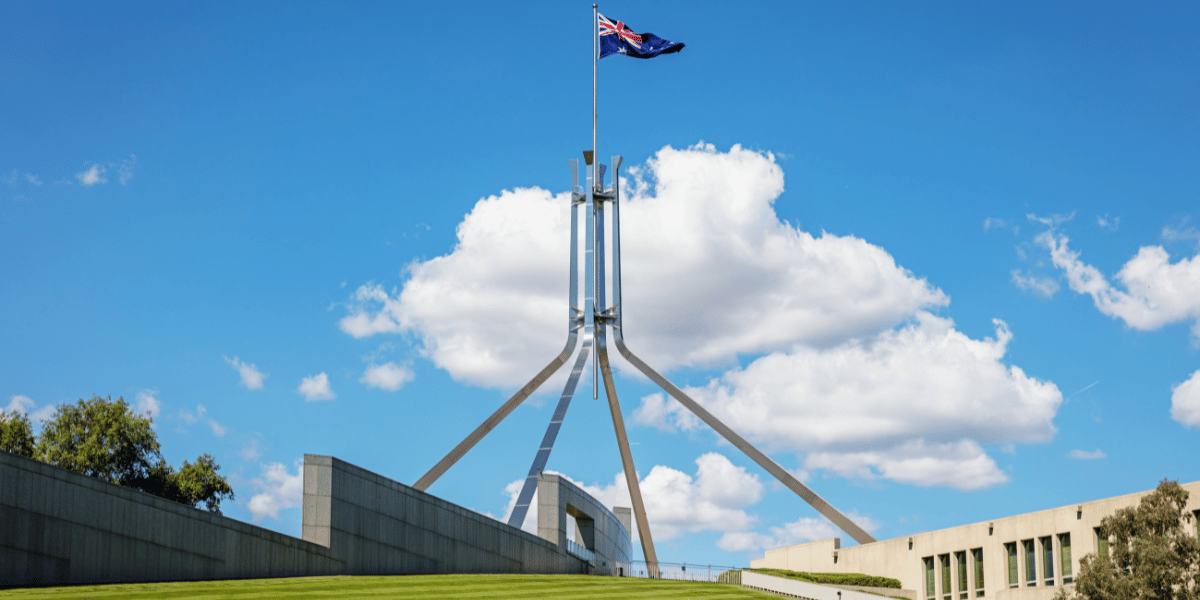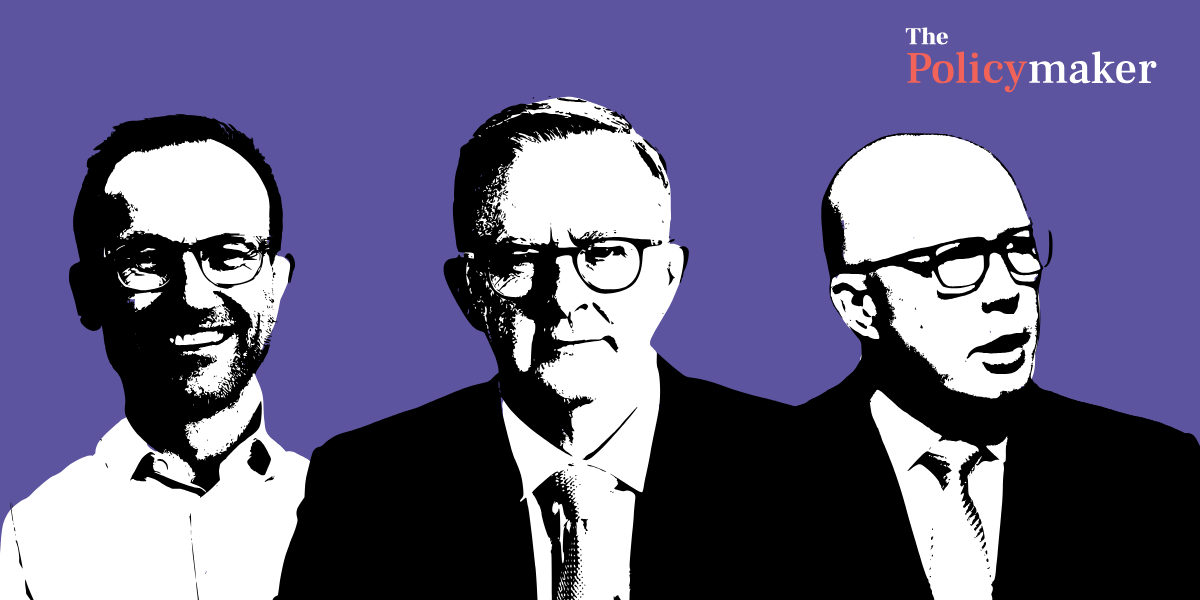30 April 2025
No architect expects a building to rise on the strength of drawings alone. And yet, in public policy, we sometimes mistake blueprints for buildings.
The recently released NSW Innovation Blueprint 2035 is welcome: the state’s first comprehensive innovation strategy since 2016. It sets clear goals, identifies key policy levers and commits to measurable targets. But now the real work begins.
For NSW to translate this strategy into tangible outcomes – more jobs, increased exports and enhanced industrial capability – it requires innovation “builders” and must ensure they are aligned: clear funding programs, regulatory coherence, industry incentives and infrastructure to facilitate delivery.
A timely vision – but delivery is key
The Blueprint comes at a critical moment. Nationally, Australia has long struggled to convert its world-class research base into globally scaled businesses and new industries. The discussion paper for the Commonwealth’s Strategic Examination of R&D (currently underway) highlights that Australia’s decline in manufacturing has been accompanied by stagnant business R&D investment and slowing productivity growth.
Against this backdrop, the NSW Blueprint rightly aims to chart a different course – and it does so alongside other key initiatives. The recently released NSW Industry Policy sets out long-term missions in Net Zero, housing and local manufacturing, while the forthcoming NSW Trade and Investment Strategy will help expand export opportunities and attract capital. Nationally, the Commonwealth’s Future Made in Australia agenda provides further momentum by prioritising domestic industry capability in critical technologies and clean energy.
The Blueprint’s goals are ambitious and necessary:
- Grow the number of innovation-intensive firms by around 35 per cent by 2035.
- Push towards doubling the economic contribution of such firms in a decade.
- Support more diverse founders.
- Use innovation to address public challenges, including Net Zero and health.
The Blueprint proposes sound foundations. It defines five key action areas: strategy, funding, places, people and engagement. It also acknowledges critical gaps in the existing system, such as that only 7 per cent of venture capital in NSW went to women-founded businesses between 2020 and 2024.
But strategy documents do not innovate; people and companies do. The Blueprint’s success will depend on how well it drives real, systemic change for the businesses, researchers and industries that make up NSW’s economy.
Five policy priorities for aligning the innovation system
NSW needs a joined-up innovation system to deliver on the Blueprint’s promise. This means aligning five critical elements of state policy to drive impact at scale.
Priority 1: Align business-facing funding with business needs
To effectively support innovation across NSW, funding mechanisms must be accessible and relevant to a broad spectrum of businesses, including established small and medium-sized enterprises (SMEs).
Innovation is not confined to coworking spaces and incubators. It also happens on the factory floor of a mid-sized manufacturer in Western Sydney, in the R&D labs of a multinational firm or through the adoption of new technology in a regional health service.
Programs such as the Minimum Viable Product (MVP) Ventures grant provide crucial support for early-stage start-ups (offering up to $50,000 for product development and commercialisation). However, there remains a significant opportunity to assist the “missing middle”: established SMEs that are poised for innovation but may lack the resources or knowledge to access existing funding avenues.
Policymakers should consider strategies to make funding more navigable and tailored to these businesses, potentially through streamlined application processes or enhanced guidance on leveraging Commonwealth programs, including the R&D tax incentive and Export Market Development Grants.
Priority 2: Align infrastructure investment with translational capability
NSW needs to strengthen its support for deep tech: the science-based innovations – in quantum computing, clean energy, medtech and advanced manufacturing – that require patient capital, infrastructure and longer-term R&D partnerships to succeed.
However, deep tech ventures require substantial infrastructure to transition from research to market-ready products. The $96 million RNA Research and Pilot Manufacturing Facility at Macquarie University, providing capabilities for vaccine and therapeutic development, exemplifies the nature and extent of investment needed to support such translational activities.
Universities also play a role in this space and would benefit from state support as they create precincts, programs and pools of capital to push discoveries out the laboratory door and into the market at scale. The NSW Deep Tech Commercialisation Program, delivered by commercialisation experts at the university-founded Cicada Innovations, is a useful example of this approach.
NSW can enhance its capacity to bring innovative technologies to market by focusing infrastructure investments on areas that bridge laboratory research and commercial application, while also collaborating with national initiatives such as the National Reconstruction Fund, which supports projects in key sectors including medical science and renewables.
Priority 3: Align procurement with innovation goals
Government procurement can drive innovation by acting as an early customer for emerging technologies. By embedding innovation objectives into procurement processes, NSW Government agencies and government business enterprises – such as Sydney Trains, Essential Energy and Hunter Water – can provide local innovators with critical market validation.
This is not about favouring inferior local products. Instead, it recognises that when no clear market leader exists, NSW should prioritise trialling and supporting its own emerging technologies. Procurement becomes more than a transaction; it becomes a launchpad for innovation – offering real-world testing environments, early revenue and credibility that can help local firms compete in national and global markets.
The Blueprint proposes a promising step in this direction: the development of an Innovation Challenge and Procurement Program. This would enable government agencies and innovation-intensive firms to co-develop solutions to complex public challenges, with a clear pathway to procurement. By channelling existing procurement spend – including in high-impact areas such as Net Zero, energy transition and digital transformation – through structured innovation challenges, the government can simultaneously improve public service delivery and accelerate the growth of local businesses. Supporting a centralised innovation procurement team, as suggested in the Blueprint, would also help build capability across agencies and ensure consistent, scalable adoption of these approaches.
Priority 4: Align regulation with market creation
Regulation is often seen as a barrier to innovation. Yet when designed effectively, it can serve as one of its strongest enablers. Thoughtful regulatory frameworks foster the emergence, scaling and safe adoption of new technologies. Regulatory sandboxes, used in sectors including fintech, energy and health, provide innovators the opportunity to test products in controlled environments. This minimises risk while accelerating learning for both businesses and regulators.
Regulation can also create markets by embedding forward-looking standards in planning, infrastructure and procurement. For instance, integrating Net Zero targets, circular economy principles or digital compliance standards into building codes and public projects can stimulate investment and innovation in priority areas. NSW also has the chance to align regulation with national and global standards – particularly in clean energy, advanced manufacturing and medtech – to assist local firms in accessing international markets.
The policy objective should be to treat regulation not merely as rule-setting but as a tool for fostering innovation. This entails early engagement with industry, flexible pathways for testing new solutions and a commitment to evolving regulation as technologies advance. When executed well, smart regulation positions NSW not only as a developer of new technologies but also as a leader in deploying them at scale.
Priority 5: Align innovation planning across portfolios
Innovation should not remain on the periphery of government policy. It needs to be a cross-cutting priority embedded in the day-to-day work of every department and agency. The scale and complexity of challenges NSW faces will not be solved by technology alone, but neither will they be resolved without it.
Integrating innovation across government involves moving beyond siloed initiatives or ad hoc pilot projects. It means ensuring that agencies responsible for health, education, transport, planning, energy and regional development are not just passive recipients of innovation policy but active drivers of it.
This requires governance structures that promote coordination, share learning and reward collaboration. It entails aligning budgets, procurement processes, regulatory settings and performance measures with innovation goals. When done well, this integrated approach allows government to identify synergies across portfolios and create shared platforms that unlock value in multiple sectors. For example, efficiencies in innovation could be generated by identifying intersections between digital health, energy-efficient schools and smart transport infrastructure.
The Blueprint recognises this need, proposing the development of a future whole-of-government operating model to oversee innovation policy and program delivery. A steering committee of senior public sector leaders is envisaged to drive coordination, share best practices and strengthen the evidence base for what works.
Embedding this kind of leadership across government will be crucial for ensuring that innovation is not just a matter of individual projects, but a system-wide capability – one that supports agencies to test, adopt and scale innovative solutions more consistently and with greater impact. A joined-up innovation strategy will be more productive and will help build a resilient, dynamic and inclusive innovation ecosystem.
Moving from blueprint to impact
The NSW Innovation Blueprint 2035 provides a robust foundation for cultivating a more dynamic, inclusive and globally competitive innovation economy. It sets the right goals and acknowledges the right challenges.
But a blueprint is only as valuable as the building that follows.
The NSW Government now has a unique opportunity to lead not only in innovative ambition but also in its implementation. The forthcoming NSW Trade and Investment Strategy is a way for the state to incorporate these priorities. Other states – through schemes like Breakthrough Victoria and Advance Queensland – are already showcasing the benefits of coordinated, system-wide innovation strategies.
NSW has every asset it needs to match or surpass them: research excellence, sectoral diversity, entrepreneurial talent and emerging innovation precincts from Westmead to the Hunter and the Riverina. Integrated action is now imperative: aligning funding, infrastructure, procurement, regulation and strategic delivery.
The Blueprint is drawn. The building awaits. It is time to get to work.
Dr Jarryd Daymond is a Lecturer in Strategy, Innovation, and Entrepreneurship, as well as the Academic Director (Strategic Initiatives) at The University of Sydney Business School. He also serves as a co-convenor for the Innovation and Commercialisation node of the Sydney Policy Lab and acts as a Business School Ambassador for the Sydney Nano Institute. Jarryd teaches and conducts research on science commercialisation, with a specific interest in the emergence and evolution of commercialised scientific discoveries, their enabling ecosystems and how to responsibly develop these emerging technologies.
Image credit: Funtap from Getty Images
Features
George (Kev) Dertadian
Subscribe to The Policymaker
Explore more articles
Libby Hackett, Jordan Ward, Jack Isherwood, Bonnie Bley, Hannah Lobb, Isabella Whealing and Hugh Piper
Features
George (Kev) Dertadian
Explore more articles
Libby Hackett, Jordan Ward, Jack Isherwood, Bonnie Bley, Hannah Lobb, Isabella Whealing and Hugh Piper
Subscribe to The Policymaker








